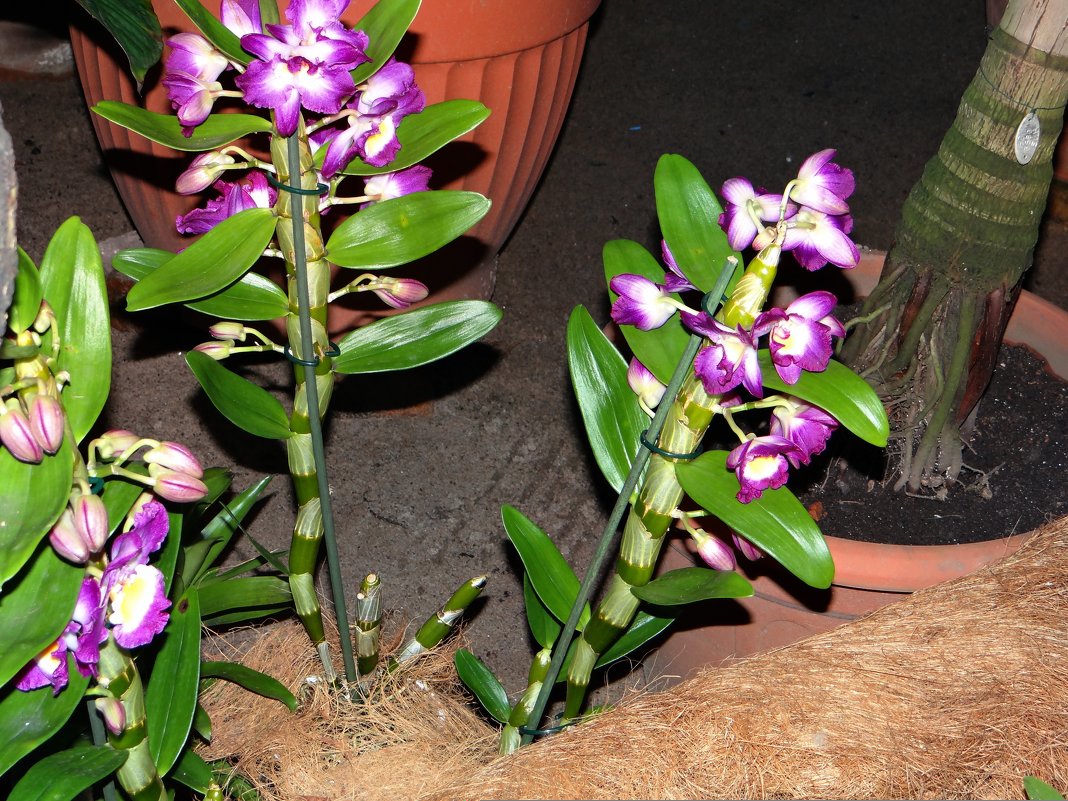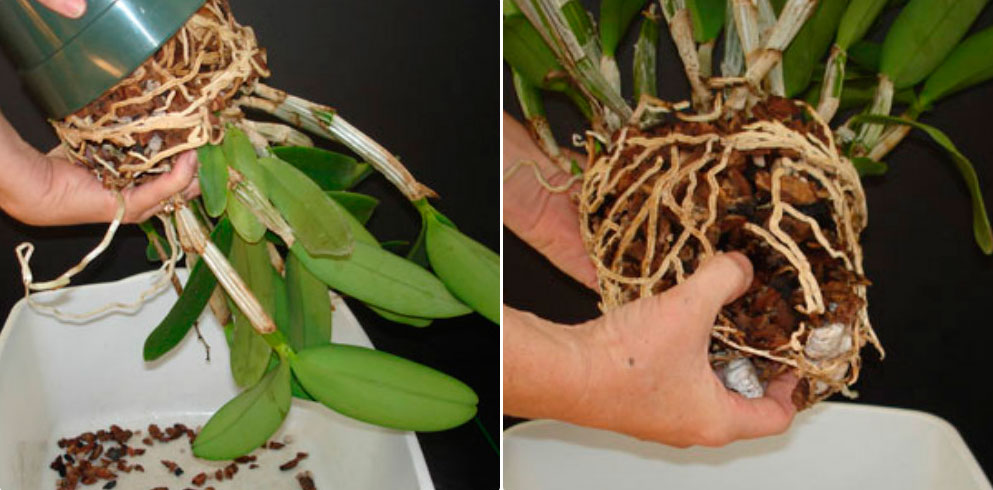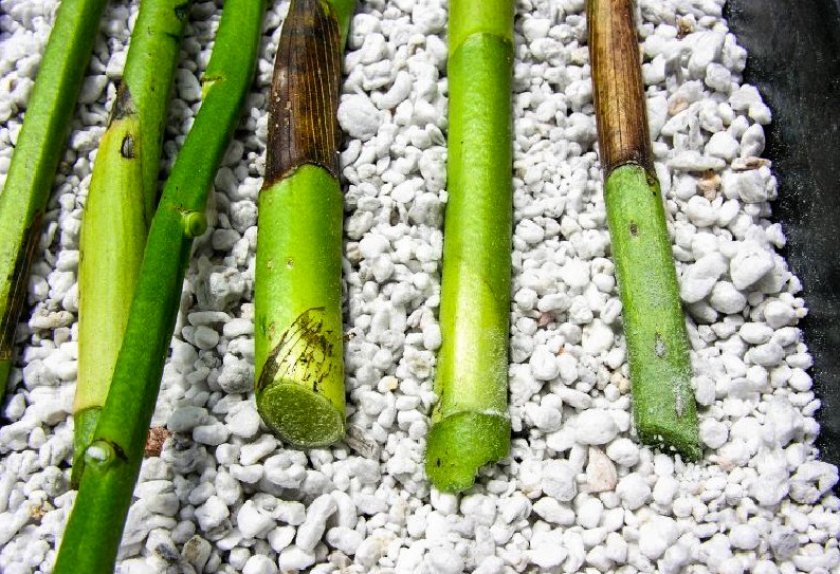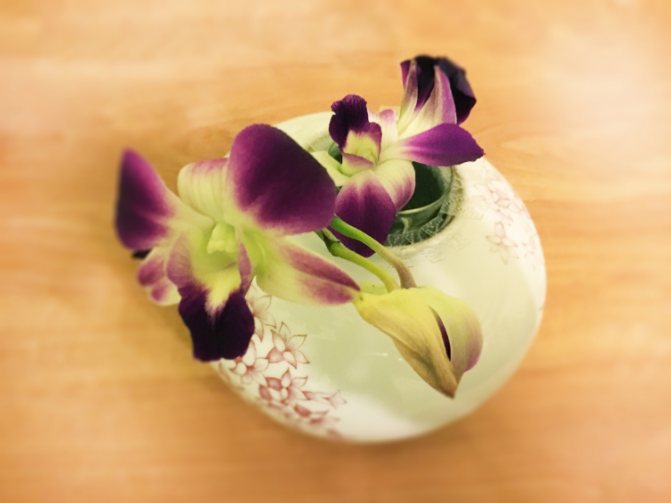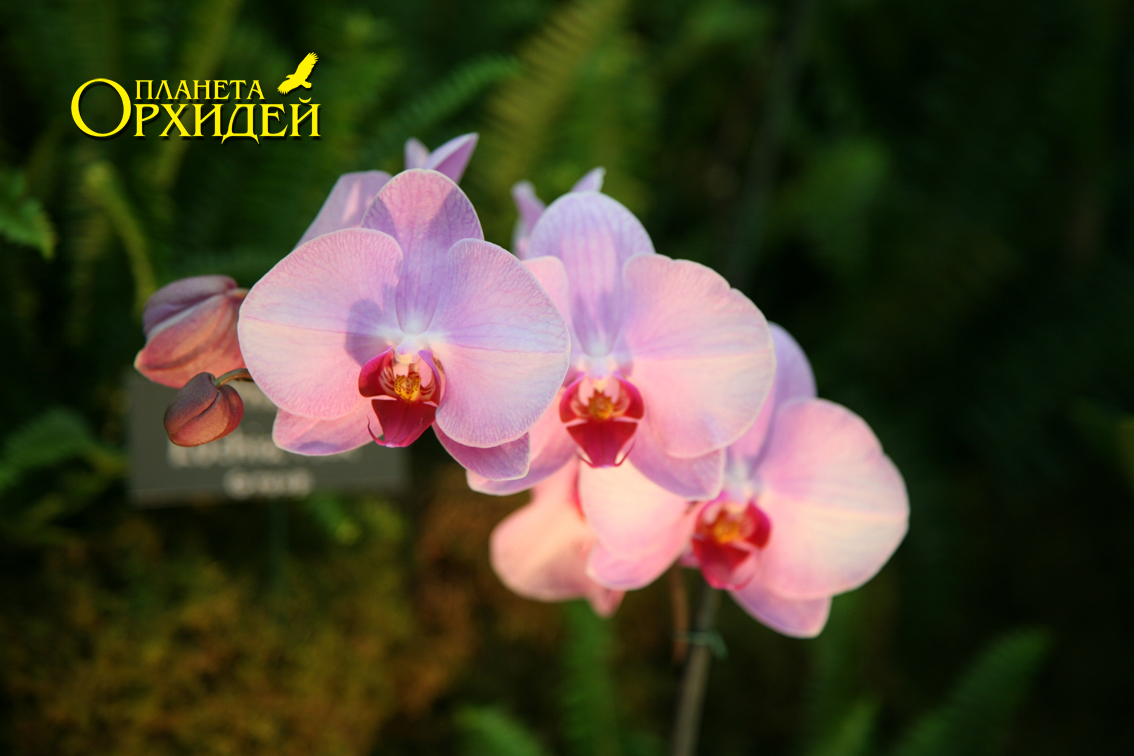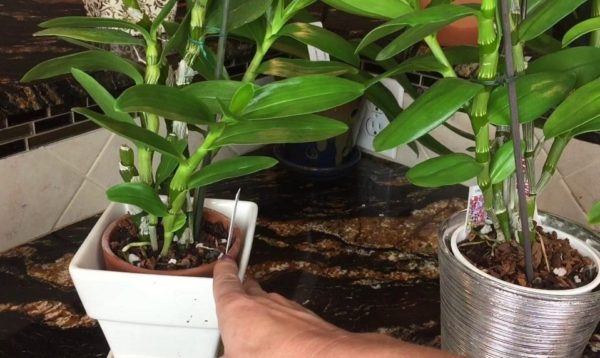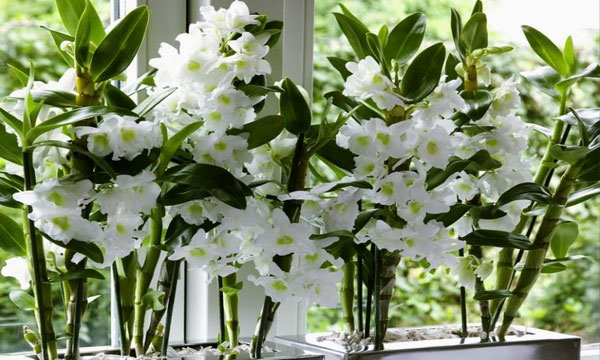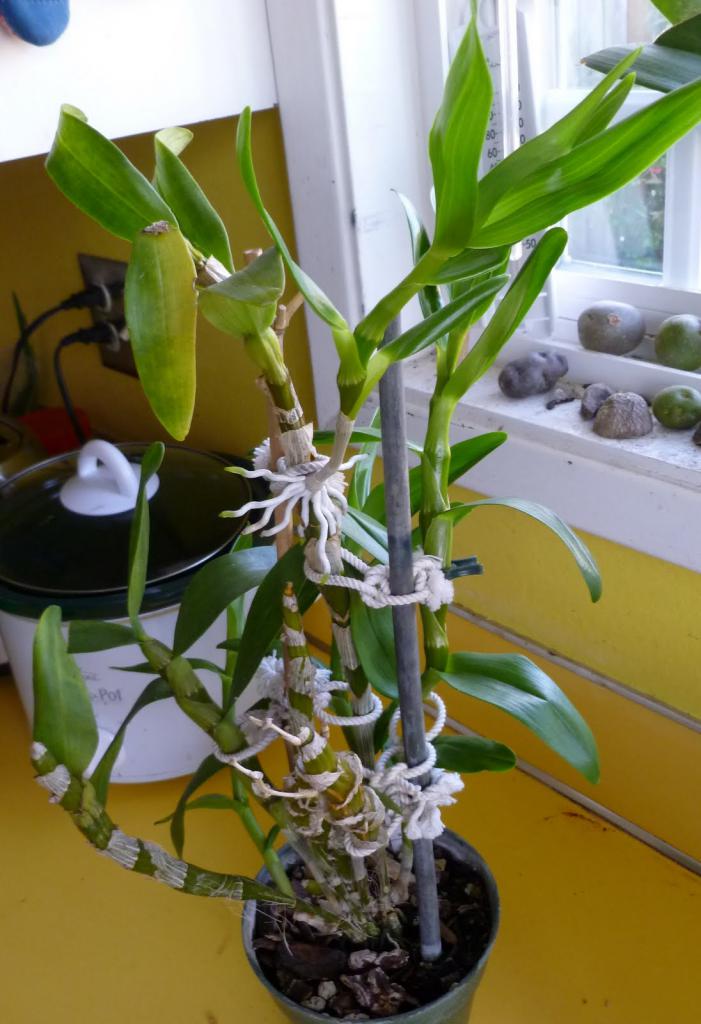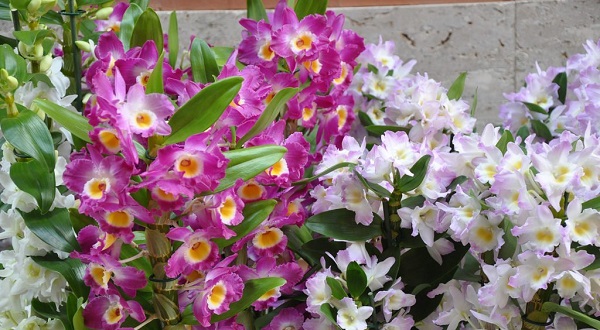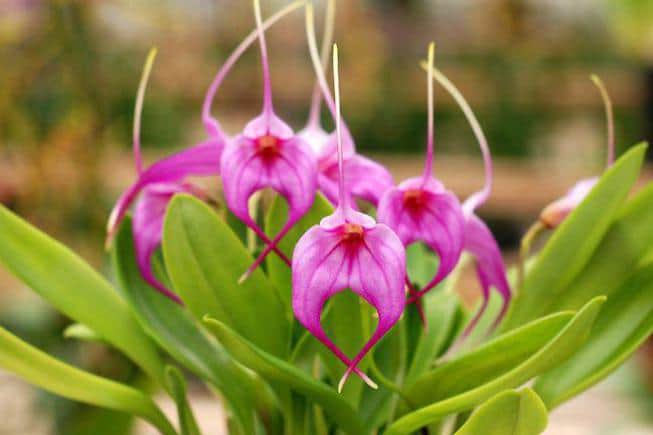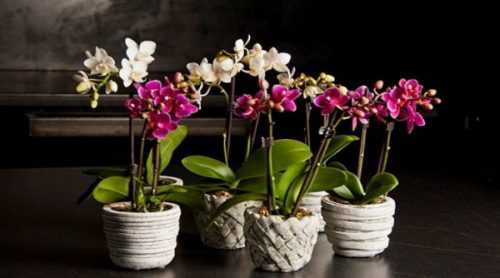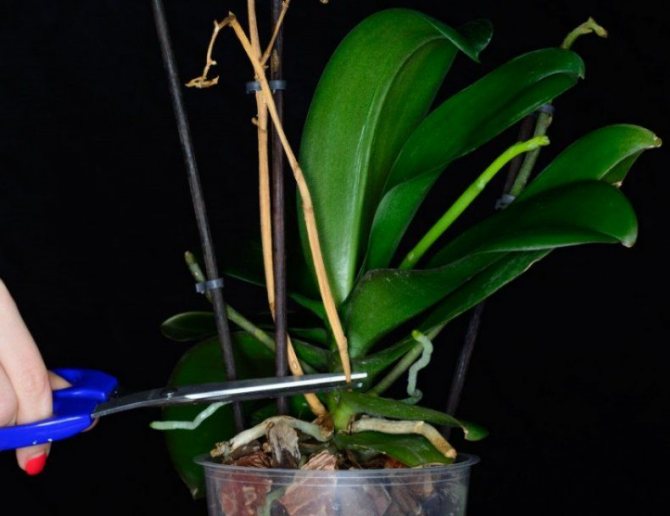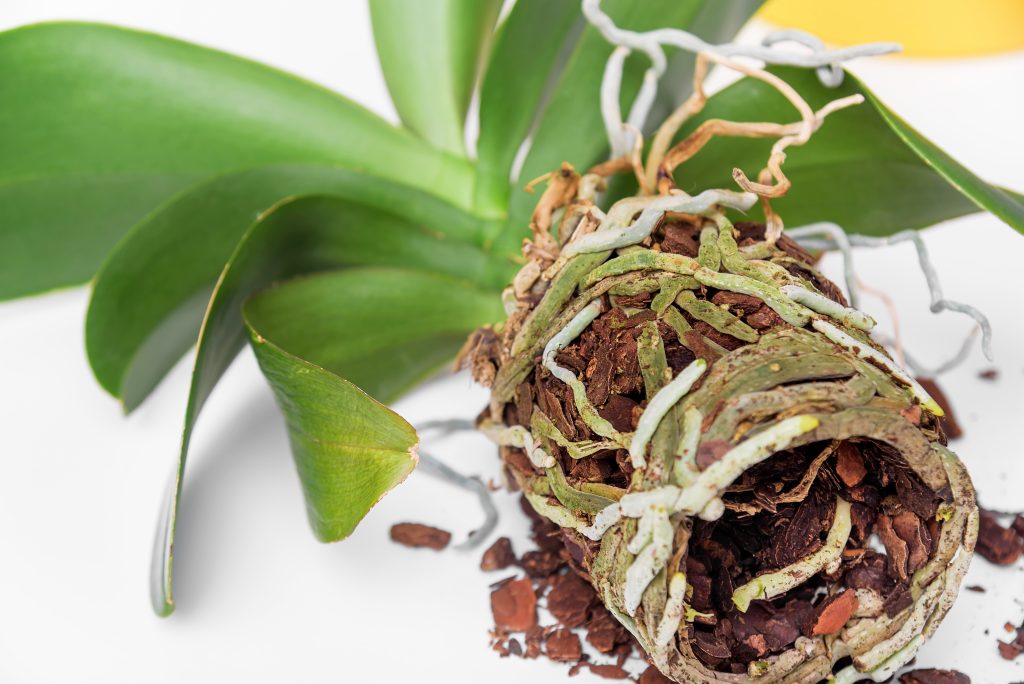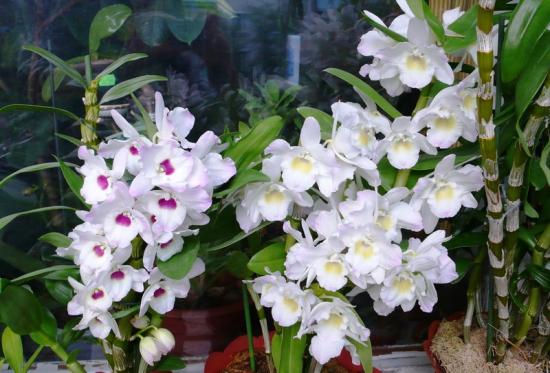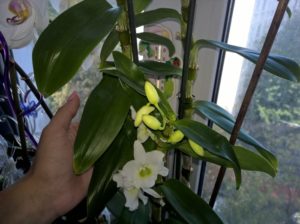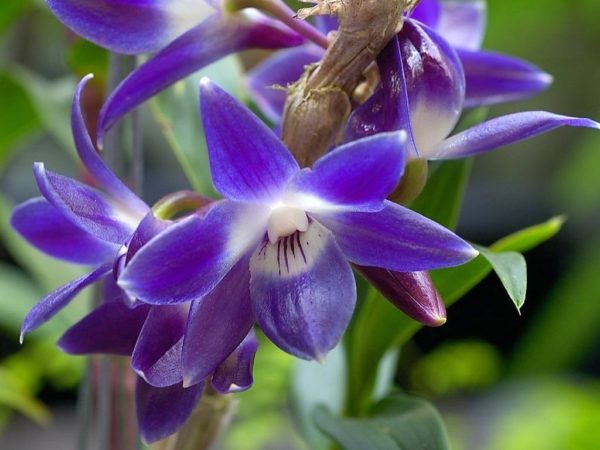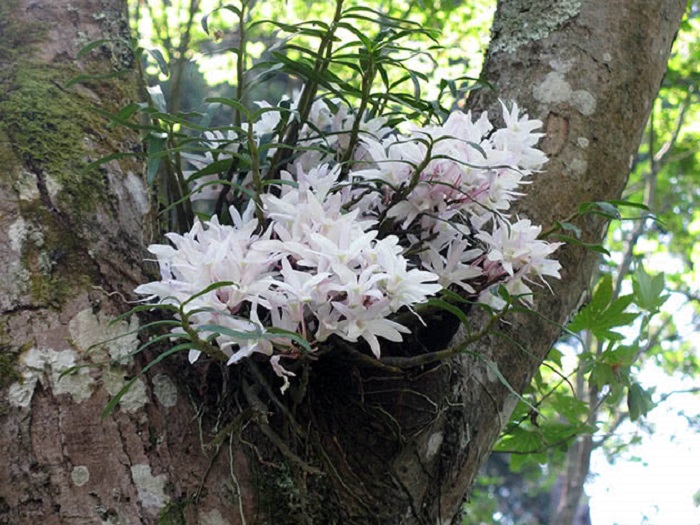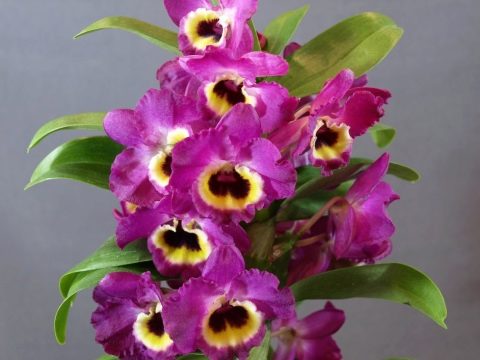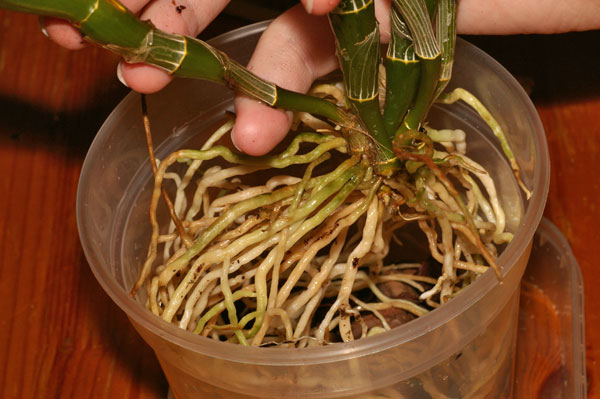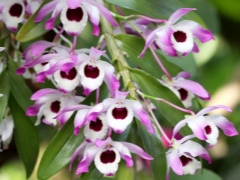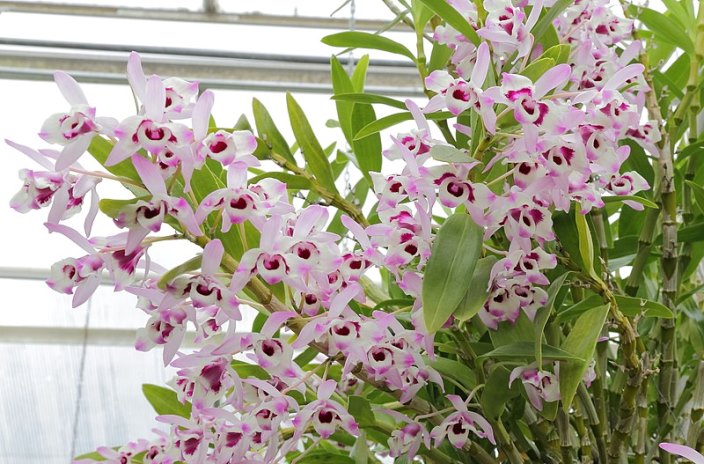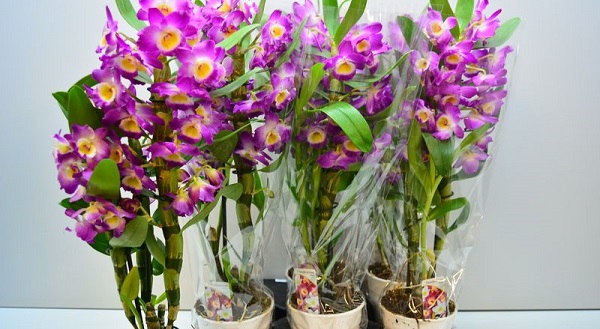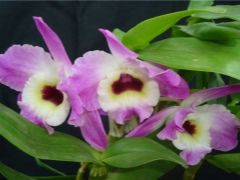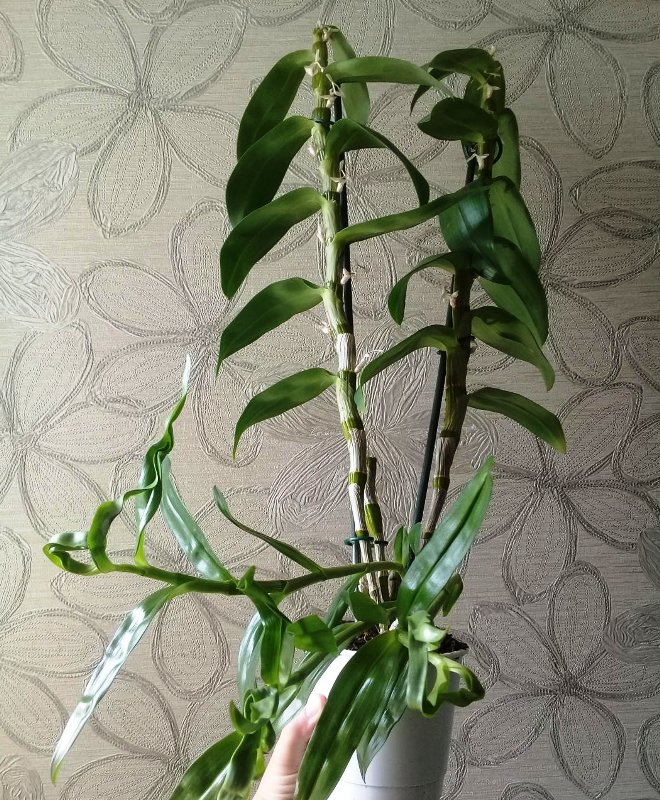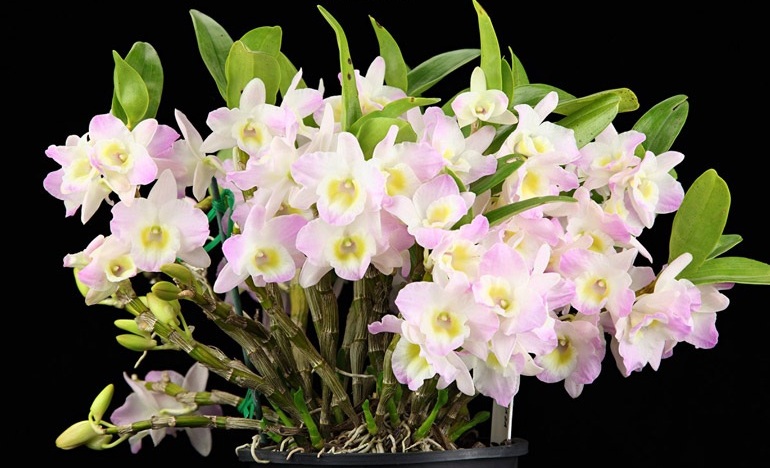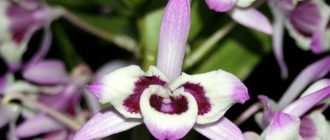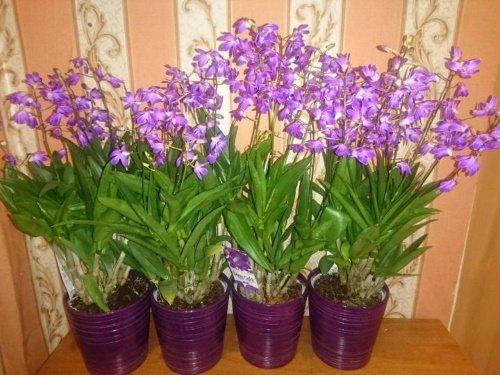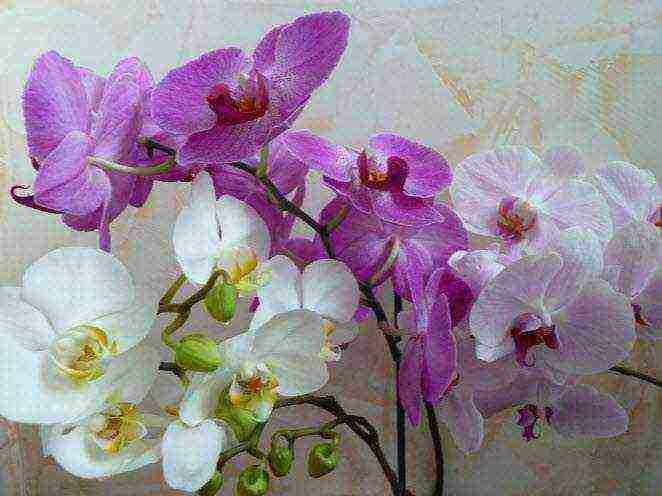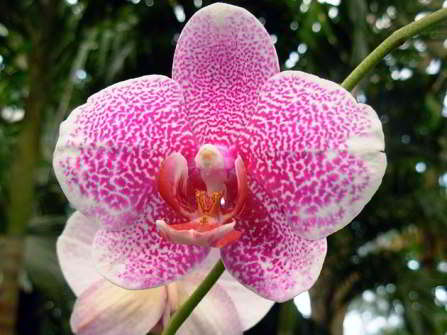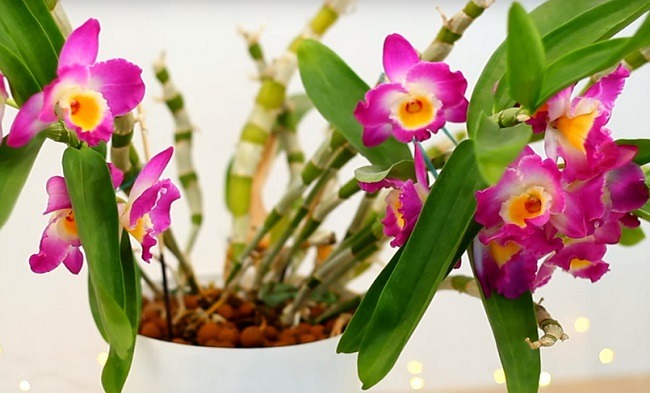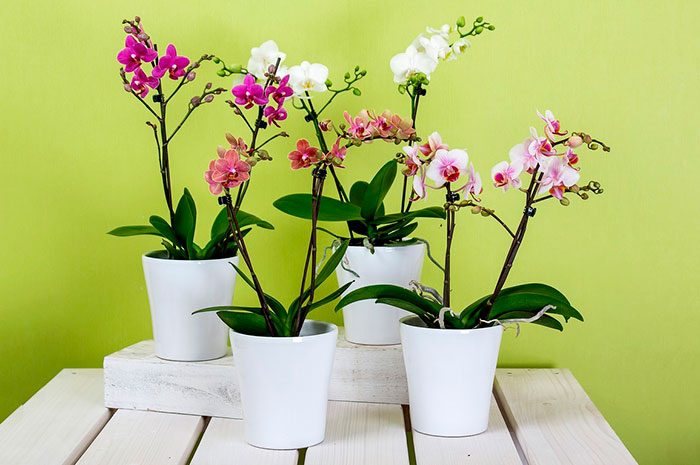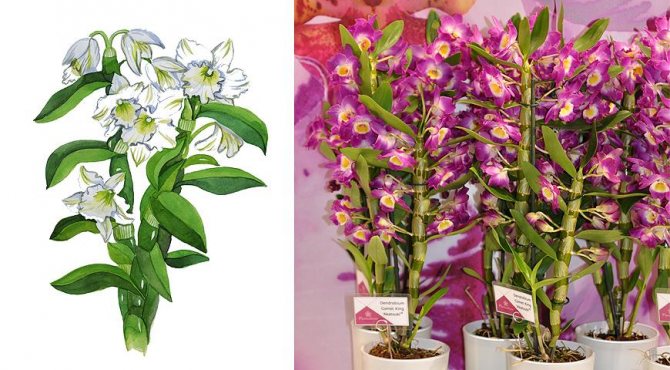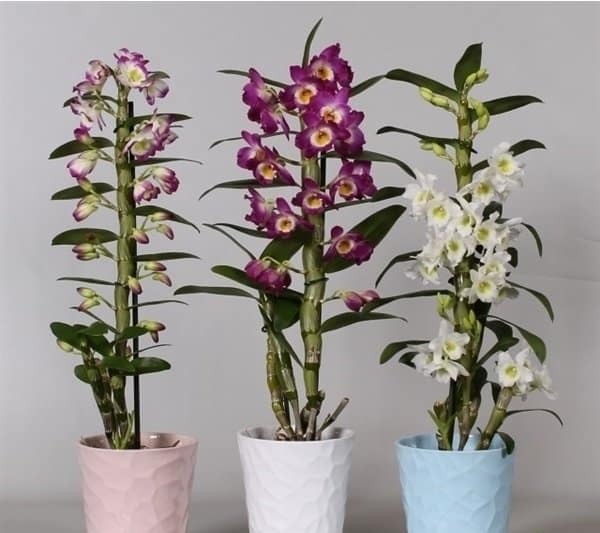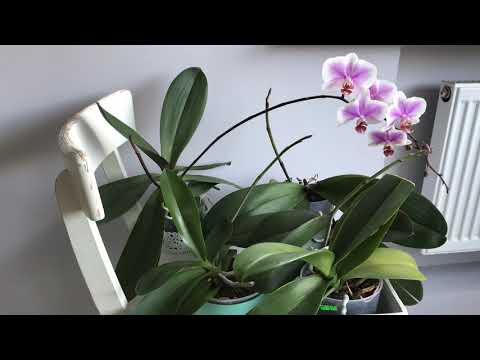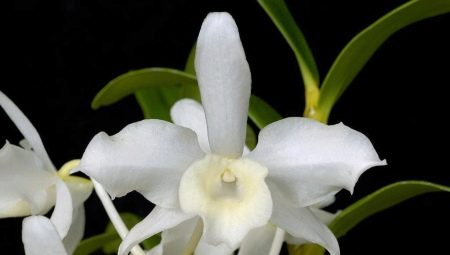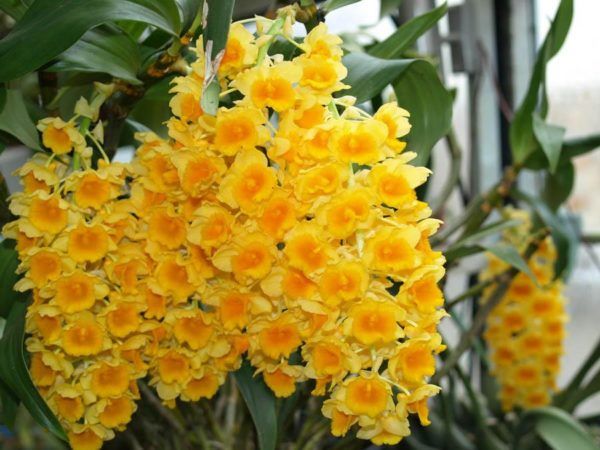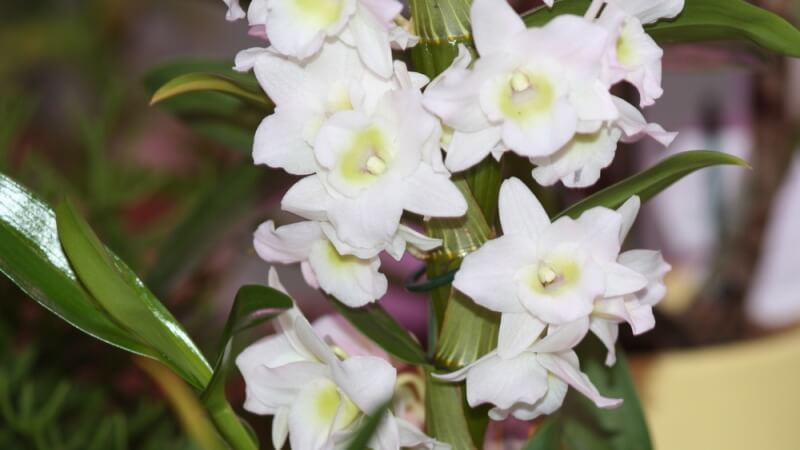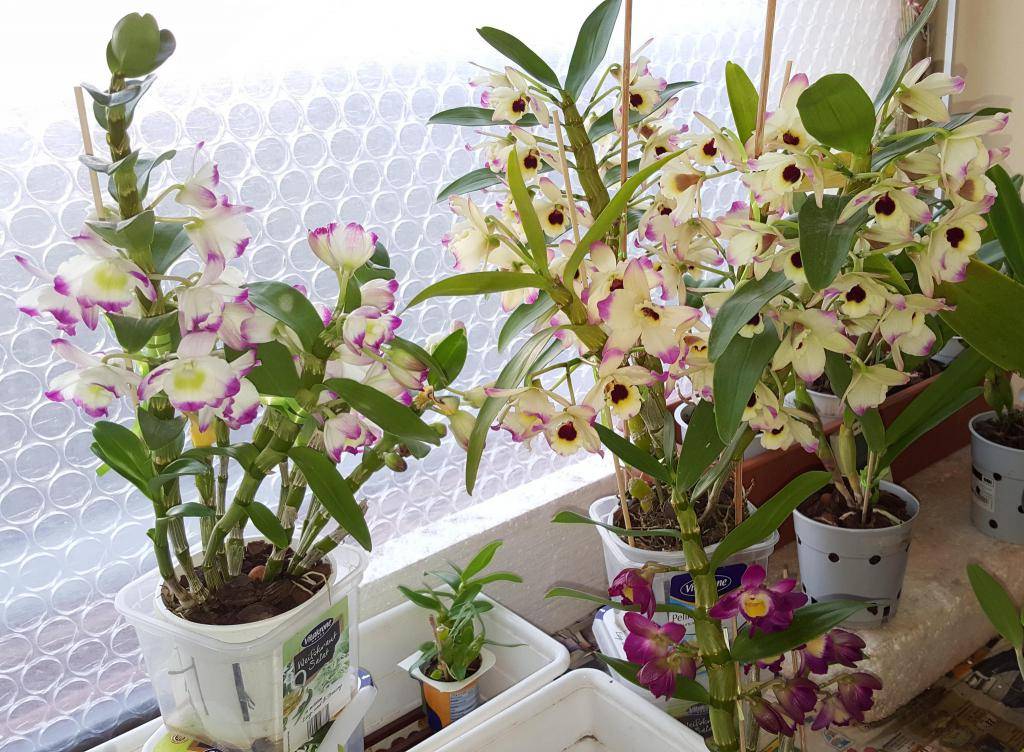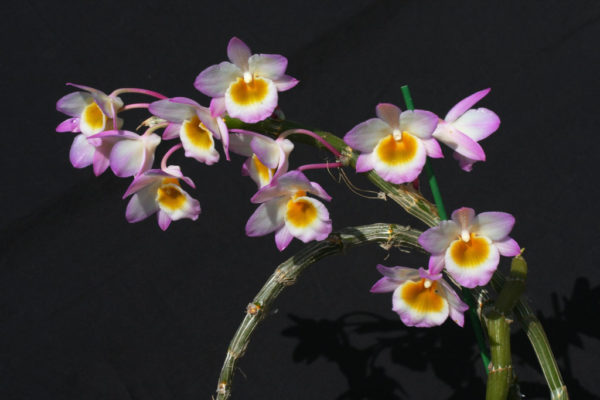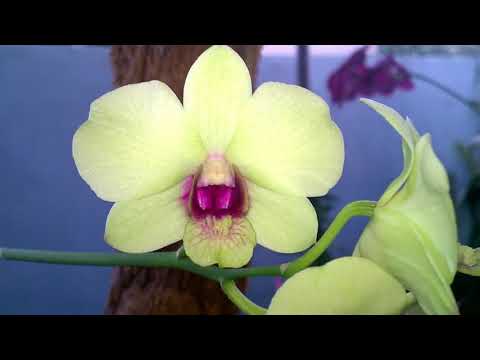Orchid care and propagation at home
In city apartments, it is required to maintain a special regime for growing orchids. It depends on the season (winter, summer), and if you do not follow the cycles, then the orchid is unlikely to please with flowering.
Seasonal conditions:
- summer - bright lighting, abundant watering, high air humidity. Temperature + 25ºC, in the flowering stage - not higher than + 18ºC. At night, the temperature drops by 3-5 degrees;
- winter - moderate lighting, reduce watering, do not water the orchid in the dormant stage. Maintain temperatures during the day + 15ºC… + 17ºC, at night + 11ºC… + 13ºC.
Judging by the reviews of florists, it is not so difficult to propagate the favorite Dendrobium variety. Among the simplest options:
- children (new sockets);
- propagation by cuttings.
It is a little more difficult to propagate the plant with pseudobulbs and dividing the bush, but these methods also have their "advantages".
Cuttings
To begin with, prepare a small container, put a layer of sphagnum in it, slightly moisten it. At Dendrobium, an age-related pseudobulb (bare, without leaves) is cut off, cut into cuttings. It is necessary that there are 2-3 buds on each cutting.
They put the cuttings in the moss, cover with a lid. The container is placed in a warm place, providing dim diffused lighting. Temperature - about + 22ºC… + 23ºC. The little house is ventilated, the moss is moistened. After about 20-25 days, the cutting will grow roots, then the shoots themselves will begin to grow. As soon as the roots grow up to 5-6 cm, the cuttings are transplanted into separate containers.
With the help of kids
The orchid gives flower stalks or rosettes on the pseudobulb. For reproduction, it is precisely the sockets that are needed - the small children of the plant. They are carefully cut off, kept for 2-3 hours to tighten the wounds, then planted in prepared containers with wet moss.
It is advisable to create a "greenhouse effect" for children by covering the containers with film or glass.
During the rooting period, the moss is regularly moistened, the greenhouse is ventilated. If everything is done correctly, the Dendrobium baby will begin to grow actively, and in about a year it will bloom.
Pseudobulbs
Reproduction by pseudobulbs requires attention and accuracy, therefore it is more often used by experienced florists. A young, non-flowering bulb is chosen on the bush, cut off with a pre-disinfected knife. Placed in a transparent container with a lid on moistened moss, cover.
Germinate in warmth, in diffused light, temperature + 21ºC… + 24ºC. About in 30-40 days will appear roots. After about 2-3 months, the plants are planted in pots and looked after as for all orchids of this species.
By dividing the bush
This method is used only on mature, well-grown orchids. The bush should have pseudobulbs of various ages, an extensive root system. When transplanting a plant, the bush is examined, 1-2 divisions are separated from it. Leave them in the air to dry the sections, then planted in separate pots with a substrate. Further care for Dendrobium Nobile at home is normal, like a transplanted plant.
Diseases and problems of growing orchids
Dendrobium Nobile is only gaining popularity among Russian orchid lovers. Those who grow it note the plant's unpretentiousness and disease resistance. But even with proper care, problems can arise: cultural diseases, stunting, lack of flowering.
Diseases
The most common infection affecting Dendrobium is a fungal disease of the stems and roots (rot). The main reason is excess moisture in the substrate. Signs of infection:
- wilting and wilting of shoots;
- the appearance of brown and yellow spots on the leaf plates.
To prevent this, it is necessary to follow the irrigation schedule, dry the bark after irrigation. To cure the orchid, it is transplanted into a new pot, removing all rotten shoots and roots.
Note! For any trimming of peduncles, shoots, roots, the cuts are sprinkled with charcoal and kept in the air for a couple of hours.
With a strong infection with a fungus, it is allowed to treat the plant with Mikosan. After transplanting into a new substrate, the orchid is not watered for 19-14 days, the condition of the plant is monitored.
Fall of the lower leaves
There is no reason to worry, as fallen leaves are a natural process. Orchids grow old, and leaves gradually fall off from the age of the pseudobulbs.
The orchid does not bloom for a long time
Orchid blooms are eagerly awaited and are very upset if an exotic plant does not release peduncles... Main reasons:
- excess nitrogen fertilization;
- lack of lighting;
- lack of proper conditions during the period of flower stalk laying (in the dormant stage).
Dendrobium needs at least 12 hours of daylight hours (preferably more), mandatory exposure in the resting stage cycle. When applying fertilizers, overfeeding with nitrogen is not allowed, since instead of flower stalks, the orchid forms new growth shoots.
Yellowing of leaves and the appearance of spots
Leaves may turn yellow due to age, sunburn, improper spraying. In each case, the reasons are dealt with, and then the errors are eliminated:
- remove the orchid from bright sunlight in a small partial shade;
- spray the bushes only at temperatures above + 20ºC (otherwise weeping spots will appear);
- after spraying, they carefully dry the plants, remove moisture from the axils of the leaves.
Rotting roots
The reason lies in the excess water in the substrate. It is necessary to transplant the exotic into a new container with a renewed bark. If root damage is noticed during transplantation, they are cut off and must be dried. When planting in an old container, it is pre-disinfected (potassium permanganate solution).
Reproduction methods
There are two ways to propagate the Dendrobium orchid at home: through division and secondary shoots.
Division
Although this method of reproduction of Dendrobium is the simplest, only older, large individuals, the rhizome of which can be divided, are suitable for it. The incision is processed with ground cinnamon. The detached parts must contain at least four pseudobulbs. Usually, only two new plants are produced from one plant.
Dividing an orchid bush
The selected portions are placed in smaller potting pots. Watering should be very sparse before young shoots appear. Some growers recommend not watering at all for 7 days. After the first escape, you can start grooming as usual.
Cuttings
For the production of cuttings, old stems are used, which have already shed their leaves. At the first stage, the main task is to get children. For this, cut cuttings treated with coal are placed in greenhouse conditions, which can be a plastic container, the bottom of which is lined with sphagnum. The cover must contain holes for ventilation.
Orchid cuttings in a container
The cuttings are placed directly on the sphagnum and sprayed with the Epin growth stimulator. The container is then placed in a warm place.
Important! The wait for the appearance of children can be up to six months. At the same time, constant monitoring of the greenhouse is necessary in order to ensure the desired temperature, illumination, sufficient humidity, but to exclude the appearance of mold.
Children are separated from the cutting only when 2-4 roots appear, then they can be planted in a separate container.
Leaving after flowering ...
In the life cycle of dendrobium nobile, there are three phases: flowering, growth and dormancy.
In the first phase, which most often occurs in spring, flowers bloom. Their number reaches 20 pieces.Sooner or later, flowering ends: the flowers wither and fall off. Then the question arises, what to do next?
Leave the orchid in a cool place and wait for new growth to appear. Stop intensively moisturizing the plant. New growth must take its own roots. When their size reaches a few centimeters, you can resume watering. The soil should dry well between waterings. When the new growths are strong enough and begin to inflate, it is recommended to stop watering for a while and lower the temperature.
Keep without watering for a week. This stimulates the formation of flower buds. With the appearance of buds, start watering again, otherwise it will grow children, and not flowers.
Completely dried peduncles are cut off after flowering. Greens leave or prune.
It is not necessary to remove the pseudobulb after flowering unnecessarily. Only in the case of its complete drying, when it gave up the accumulated nutrients and water. If the pseudobulb has green buds that have not yet bloomed, then the orchid may release new flowers. By properly caring for dendrobium nobile, you can achieve re-flowering.
The third stage: the leaves turn yellow, the leaves fall, preparations are underway for the dormant period. Watering is reduced, and the introduction of additional nutrition is completely eliminated.
The dormant period falls at the end of autumn - the beginning of winter.
From the end of October, Dendrobium begins a dormant period, which lasts about 2 months. It is not as pronounced as in the natural environment, but the plant will need rest. Watering is stopped at the same time. The introduction of additional food is completely excluded. Temperature range during the day + 15-18 ℃, at night + 8-10 ° C. The plant is exposed in the brightest, driest place.
If the daily temperature fluctuation cannot be created, then the plant is exposed at a constant temperature of about 10-12 ° C.
The appearance of young shoots at the base of the bulb means the end of the dormant period, watering is resumed. The plant is fed with increased concentrations of potassium and phosphorus, which are necessary for the formation of flower buds.
Usually dendrobium bloom lasts 8-12 weeks, at high ambient temperatures it can be reduced. Lack of colors: insufficient lighting, no rest period provided.
Peculiarities
Even with the plant's enviable adaptability, it still needs time to get used to the new climate and soil. Sometimes the stress associated with an unfamiliar environment causes a stop in growth, the normal functioning of the plant organism, and as a result, the orchid stops blooming. Therefore, a flower is transplanted only as a last resort. There is no secret why Dendrobium does not like this procedure so much.
Orchid roots are capable of rapid development, which leads to interlacing with soil elements, moreover, the root processes are intertwined with each other. As soon as the root system begins to grow, thickenings (bulbs) that store water and nutrients appear, which means it's time to prepare the plant for transplantation.

It is worth paying attention to the following main reasons for moving a flower to another container and substrate:
- painful condition of the epiphyte;
- depletion, oxidation of the soil and a change in its structure, which does not allow retaining liquid - this is due to frequent feeding and watering, especially with water from the water supply, and the excessive presence of potassium and phosphorus salts can worsen the condition of the roots;
- the pot is too small, due to which the space between the roots is compacted and does not allow enough air to pass through.
And also transplanting is relevant when the reproduction of the exotic is to be done. Experienced flower growers advise to transplant the dendrobium orchid once every 2-3 years, but this can be done only after the plant has bloomed. Most often this happens in the spring, in April or May, when the flower begins to grow dynamically.Then the procedure is carried out before the formation of new root branches, since they can easily be injured.
Epiphytes that bloom in the autumn are also allowed to be transplanted until they give fresh shoots, buds and leaves. This should not be done during periods of rest and rest. The plant must be dived after purchase, but only after flowering is complete. This is due to the fact that the land in which the flower is sold does not have the characteristics necessary for the usual life of the culture.
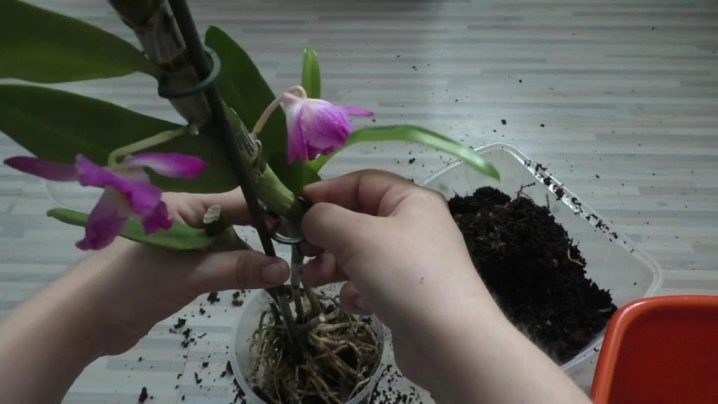
Care features
Dendrobium phalaenopsis is quite unpretentious and subject to optimal conditions of detention does not cause significant trouble to the owner. Hybrids tolerate room conditions quite well.
Optimal conditions for keeping
This species and the hybrids obtained from it belong to warm orchids. In the natural habitat, the climate is quite hot, and precipitation is more or less regular. Although a pronounced period of drought is also present.
Temperature
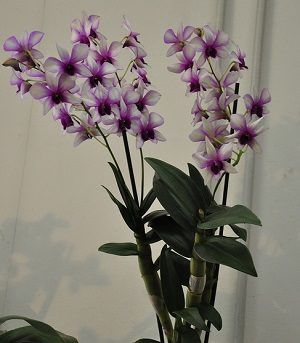 It is believed that for species plants, the optimal daytime temperature should be range from 28 ° C to 32 ° C, and nighttime temperatures range from 23 ° C to 26 ° C. Hybrids thrive better at lower temperatures ranging from 18 ° C to 24 ° C.
It is believed that for species plants, the optimal daytime temperature should be range from 28 ° C to 32 ° C, and nighttime temperatures range from 23 ° C to 26 ° C. Hybrids thrive better at lower temperatures ranging from 18 ° C to 24 ° C.
Under these conditions, the plant will constantly form new shoots and bloom without problems.
However, the plant is able to withstand temperatures far beyond the optimum temperature range: 10 ° C to 42 ° C.
Plants are able to tolerate such extreme temperatures for orchids for a short time without harm to health, but they will not be able to constantly survive in such conditions.
Important! At any temperature of the content (warm or moderate), it is important to ensure a difference of 5 ... 6 ° C between day and night temperatures.
Humidity
Species orchids require high humidity, 60% or more, but hybrids are less whimsical and can tolerate less humidity. However, air humidity also plays an important role in plant growth and the likelihood of flower stalks.
Light
The light intensity must be high enough. Dendrobium phalaenopsis easily tolerates direct sunlight, except for midday in the summer, although it can adapt to them. On the northern windows, it may suffer from a lack of light, and in winter it is advisable for the plant to provide additional lighting.
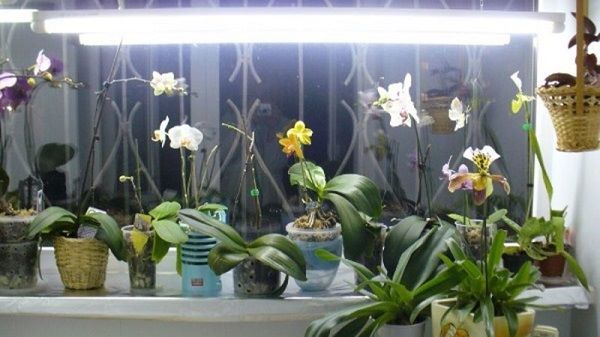
Backlighting is an important aspect in caring for orchids at home (phytolamp photo).
Landing
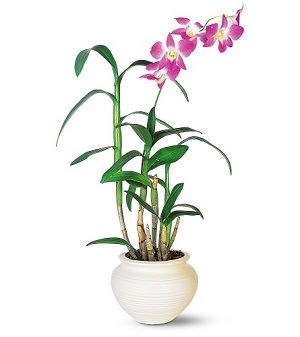 In an apartment, it is better to prefer planting on a block in order to prevent the roots from drying out quickly. Of course, a block landing option is also possible, but then it is necessary to maintain a very high air humidity, which is quite difficult in an ordinary apartment.
In an apartment, it is better to prefer planting on a block in order to prevent the roots from drying out quickly. Of course, a block landing option is also possible, but then it is necessary to maintain a very high air humidity, which is quite difficult in an ordinary apartment.
When choosing a pot, it is worth considering the massiveness of the plant. Large plants, after the substrate dries, can turn over light plastic pots. In this case, for tall specimens, special clay pots for orchids can be recommended.
As a substrate you can use a mixture of bark conifers and charcoal. Some growers also add coconut chips or other ingredients. Including perlite or foam pieces to increase the breathability of the substrate.
For low humidity indoors or south exposure, moss can be added to the substrate to increase its moisture holding capacity.
Transfer
It is recommended to transplant every 2-3 years, if there is no need for an urgent replacement of the substrate. However, a transplant after purchase in a store is required if the plant has already faded.
When choosing the optimal time for transplanting, the condition of the plant must be taken into account. It is best to transplant when the dendrobium has begun to form new growth, because young roots form and grow quickly on it, which will help the freshly transplanted plant to quickly gain a foothold in the new substrate.
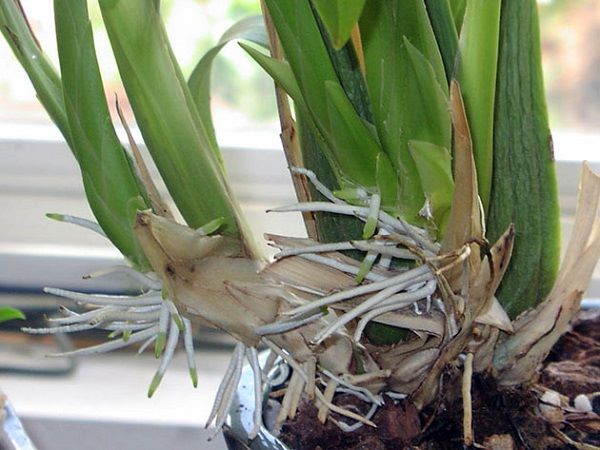
Dendrobium phalaenopsis should be replanted when young roots appear.
Watering and feeding
The frequency of watering depends on the moisture content of the substrate, the conditions of the plant and the rate of drying. The substrate should dry out between waterings, while the roots should not dry out.
Important! Top dressing is carried out 2-3 times a month. When choosing a fertilizer composition, it is necessary to take into account the stage of plant development.
During the growth of new shoots and the stretching of pseudobulbs, the plant has a higher need for nitrogen.
When growth has stopped and the pseudobulb is formed, it is necessary to reduce the concentration of nitrogen and give preference to phosphorus-potassium fertilizers, which are necessary for flowering.
Prevention of diseases and pests
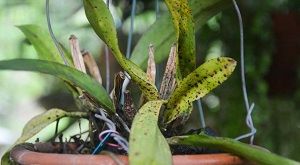 Dendrobium phalaenopsis is affected less often by pests and diseases than other types of orchids, but it is necessary to observe the main preventive measures:
Dendrobium phalaenopsis is affected less often by pests and diseases than other types of orchids, but it is necessary to observe the main preventive measures:
- it is imperative to inspect the purchased plants, carry out their preventive treatment and keep them separate from other indoor flowers for some time;
- observe the watering regime in order to prevent waterlogging of the substrate and death of the roots.
Varieties of Dendrobium
Nobile or noble
A fairly tall and massive orchid with a thick the stem sometimes grows almost to meters. Differs in a two-row arrangement of leather-like oblong leaves. At the peduncle, up to three flowers are formed on the leafless shoots of the last year.
The petals resemble an ovoid shape, and the sepals are oval-oblong, along the edge lilac or pink color and white-cream base. The lip of the flower is pubescent, usually with a dark purple spot at the base.

Dendrobium Nobile.
Unpretentiousness to conditions and ease of care make this variety quite popular for home cultivation.
Nobile "Apollo" (Dendrobium Nobile Apollon)
One of over 80 varieties of Dendrobium Nobile. A hybrid with thick, fleshy stems and green oblong leaves characteristic of this species. The foliage does not fall off. The stem is completely covered with peduncles with several flowers on each. The flowers are white with a yellowish fawn.
Height the stem reaches 70 cm... Diameter of flowers with proper care and depending on age reaches 11 cm... The orchid emits a pleasant aroma when blooming. Flowering is quite long - about 12 weeks.
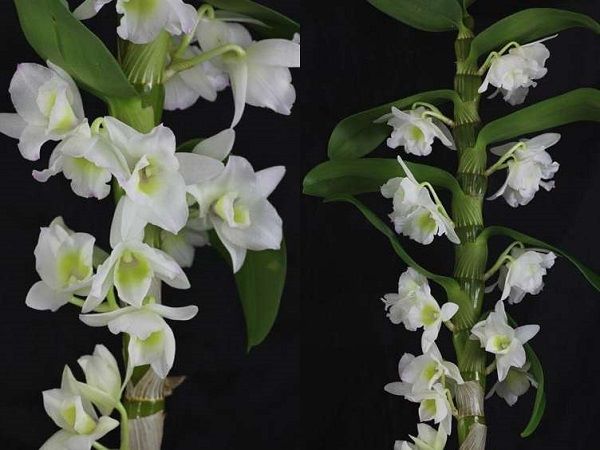
Dendrobium Nobile "Apollo".
Some features of Dendrobium Apollo and home care:
- likes bright diffused light and sufficient daylight hours. Especially in need of illumination in late autumn and winter.
- in the growth stage prefers an ambient temperature of about 25 ° C during the day and about 20 ° C at night. After the end of the growth stage, it is recommended to reduce the night temperature to 10 ° C;
- as a tropical plant, it prefers sufficient moisture - about 60%. Watering, especially during the growing season, should be regular - about 2 times a week.
Advice! Only special soil or substrate is used - "For orchids".
Blue
This species owes its color only to man. In nature and in breeding, this color does not exist. Queen Victoria's Dendrobium has a purple color.
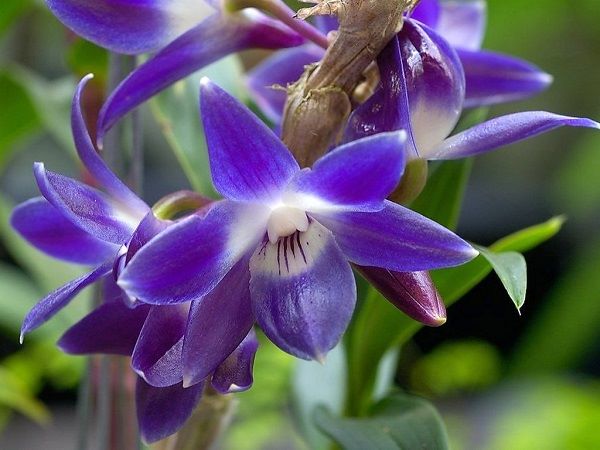
Queen Victoria's purple Dendrobium.
Who and when created a special solution that is completely harmless to plants and humans is unknown. One thing is clear that the coloring of the flowers takes place just before the sale.
This color is disposable, since the next flowering after the dormant stage, the native white color of the petals and sepals returns.
Conditions and care are the same as for classic hybrids.

A bouquet of blue-colored Dendrobium flowers.
Mix
The phrase mix in orchids just means that the flower you buy is not a natural species, but a hybrid adapted to living at home.
This attachment has practically no meaning when it comes to store options for ordinary florists.

Dendrobium Mix.
Most collectors prefer species orchids, which are almost impossible to stumble upon in a flower shop. Dendrobium mix in this case is no exception.
Reproduction
There are several ways of reproduction of dendrobium: by dividing the bush and children. The first method is very traumatic for the plant. Young plants, taking root in a new place, will not please with flowering for some time.
The second breeding method is more preferable. Babies are usually formed after flowering. They look like small outgrowths on the main stem. Once the babies have reached a length of 5 centimeters, they can be separated from the mother plant with clean instruments. With a piece of stem, they are planted in prepared soil. To do this, you need to take a small bark. And the places of the cuts on the mother plant are treated with crushed activated carbon. The soil is soaked in water so as not to injure the roots of the children, after which young plants are placed in it.
Sometimes babies on mother plant independently release buds that can bloom. In this case, you need to wait until the dendrobium has faded, and only then separate the baby.
At first, young plants need to be provided with a high level of moisture. To do this, you can spray the top of the bark daily without touching the cakes themselves, so that rot does not appear. Young plants are watered in such a way that the substrate is constantly moist, but at the same time there is no stagnation of water in it. Water treatments can be carried out from a watering can or by immersing the pot in a container of water.
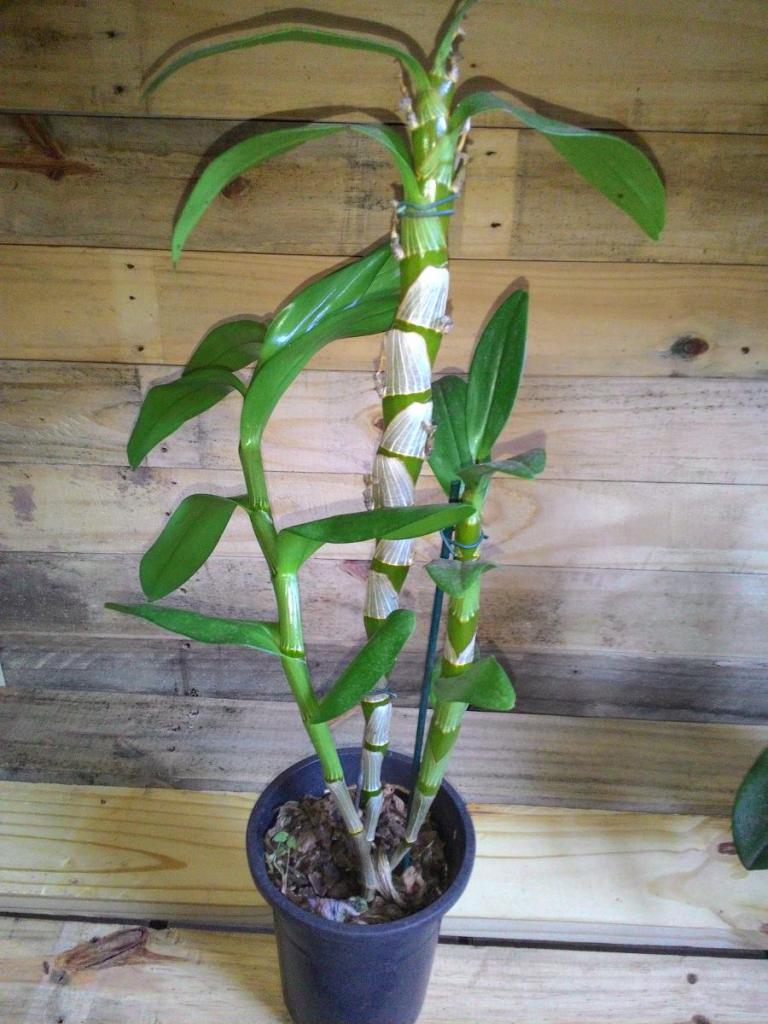
Within three weeks after the transplant, the babies gradually adapt to the new conditions. After that, they can begin to be fed with a light solution of complex fertilizer.
Sometimes dendrobium is propagated by cuttings. To do this, the pseudobulb is cut from the mother bush and cuttings are cut into 10 cm each. The cuts are treated with garden pitch or coal. Then they take bags with a fastener and fill them with wet sphagnum moss. You can put two cuttings in each of them. Then the bag is closed and left to be stored. at a temperature of +25 degrees and in bright light. The cuttings must be ventilated daily. In about a couple of weeks, they will sprout. After that, they can be transplanted into pots. The first flowering can be expected only after two to three years.

